Marcia Thornton Jones's Blog, page 26
November 2, 2023
Highlighting Great New MG Fiction
Highlighting Great New Middle Grade Fiction
There’s some great new middle grade fiction out there, and I’vehighlighted some of it on my other blog, Book Q&As with Deborah Kalb.

Janet Sumner Johnson’s new novel, The Winterton Deception:Final Word, focuses on a family competing to win an unusual spelling bee. Shesaid the inspiration for the book came from an old favorite of hers: “TheWinterton Deception: Final Word started with The Westing Game, byEllen Raskin. I stumbled on my childhood copy and decided to reread it. Quitefrankly, the book is brilliant. It’s unlike any other book I’ve read, and Imarveled at Ms. Raskin’s skills.” Johnson added, “I loved the puzzle mysteryaspect. I loved the unique voice and point of view. I wished there were morebooks like it. So what’s an author to do, but take a stab at writing my own?”
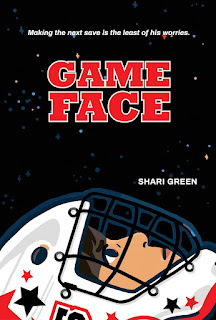
Shari Green’s novel in verse, Game Face, looks at a younghockey player dealing with anxiety issues. “For me, character creation comes by “writing my way in”—into thecharacter and into the story—by freewriting snippets of internal dialogue thatreveal the character’s heart and wounds and hopes, and mini-scenes that hint atwhat may become key moments,” Green said. “So for Jonah, basically I just started writing!When I realized how much anxiety impacted Jonah both on and off the ice, I knewI needed to tell his story.”
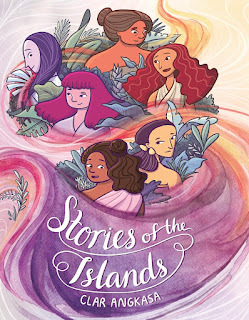
Clar Angkasa has created a graphic novel, Stories of theIslands, based on Indonesian folk tales she heard as a child. She said, “Idecided to illustrate a feminist retelling of the folktales I grew up withbecause it felt the most personal and meaningful to me. Thinking back on thenarratives I grew up, I became very determined to create the type of storiesthat I felt was missing in my childhood, ones where girls are so much more thana mother, or a daughter or a love interest, and women’s choices aren’t limitedto stereotypical gender roles.”
 Deborah Hopkinson’s historical novel,
The Plot to Kill a Queen
,takes us back to Elizabethan England. She said, “Emilia and her trusty spaniel,Mouse, are sent on a mission to spy on Mary, Queen of Scots, held captive inSheffield Castle. That castle is long gone, but I researched medieval castles,signed up for online historic talks about the Scots Queen, and read academicresearch papers as well as books about daily life in Elizabethan England. Weincluded some period illustrations to help set the stage!”
Deborah Hopkinson’s historical novel,
The Plot to Kill a Queen
,takes us back to Elizabethan England. She said, “Emilia and her trusty spaniel,Mouse, are sent on a mission to spy on Mary, Queen of Scots, held captive inSheffield Castle. That castle is long gone, but I researched medieval castles,signed up for online historic talks about the Scots Queen, and read academicresearch papers as well as books about daily life in Elizabethan England. Weincluded some period illustrations to help set the stage!”
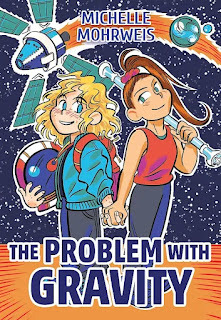 And Michelle Mohrweis’s novel,
The Problem with Gravity
,highlights STEM themes. Mohrweis, a STEM educator, said: “I love STEM. I adorerobotics and engineering. As an autistic adult, space is one of my main specialinterests! So when writing my books, I poured my love of STEM into them as muchas I could. In Gravity, Tatum and Maggie aren’t just trying to figure out allthese first crush feelings they have towards each other…they also are pairedtogether for an engineering contest!”
And Michelle Mohrweis’s novel,
The Problem with Gravity
,highlights STEM themes. Mohrweis, a STEM educator, said: “I love STEM. I adorerobotics and engineering. As an autistic adult, space is one of my main specialinterests! So when writing my books, I poured my love of STEM into them as muchas I could. In Gravity, Tatum and Maggie aren’t just trying to figure out allthese first crush feelings they have towards each other…they also are pairedtogether for an engineering contest!”
--Deborah Kalb
@font-face {font-family:"Cambria Math"; panose-1:2 4 5 3 5 4 6 3 2 4; mso-font-charset:0; mso-generic-font-family:roman; mso-font-pitch:variable; mso-font-signature:-536870145 1107305727 0 0 415 0;}@font-face {font-family:Calibri; panose-1:2 15 5 2 2 2 4 3 2 4; mso-font-charset:0; mso-generic-font-family:swiss; mso-font-pitch:variable; mso-font-signature:-536859905 -1073732485 9 0 511 0;}p.MsoNormal, li.MsoNormal, div.MsoNormal {mso-style-unhide:no; mso-style-qformat:yes; mso-style-parent:""; margin:0in; mso-pagination:widow-orphan; font-size:16.0pt; font-family:"Times New Roman",serif; mso-fareast-font-family:Calibri; mso-fareast-theme-font:minor-latin; mso-font-kerning:1.0pt; mso-ligatures:standardcontextual;}.MsoChpDefault {mso-style-type:export-only; mso-default-props:yes; font-size:16.0pt; mso-ansi-font-size:16.0pt; mso-bidi-font-size:16.0pt; mso-fareast-font-family:Calibri; mso-fareast-theme-font:minor-latin;}div.WordSection1 {page:WordSection1;}
November 1, 2023
News
 THE MUSEUM ON THE MOON: The Curious Objects on the Lunar Surface by Irene Latham, illustrations by Myriam Wares is now open for tours!
THE MUSEUM ON THE MOON: The Curious Objects on the Lunar Surface by Irene Latham, illustrations by Myriam Wares is now open for tours! Share the moon-love with a special reader in your life!
Discover the surprising treasure (and trash!) left behind by the 12 humans (so far!) who have stepped foot on the moon.
Educators, don't miss this free MOON Discussion Guide!
So much gratitude to the following bloggers for featuring posts about their visit:
Reading to the CoreKaren Edmisten
bookseedstudio
TeacherDance
A Word Edgewise
Imagine the Possibilities
Karen Eastlund
October 29, 2023
The 3 Limitations I Refuse to Accept
by Charlotte Bennardo
So the theme is 'What limits us', (or rather, me)?
The most obvious answer is TIME. Everyone complains about not having enough. Jobs, family obligations, chores, things that need to be done, and self-maintenance. All these take away from our writing/creative time. The bottom line is that we must learn time management.
 Image by Gerd Altmann from Pixabay https://pixaby.com/illustrations/cloc...
Image by Gerd Altmann from Pixabay https://pixaby.com/illustrations/cloc...
Next is LIFE. Doctors appointments, traveling, personal issues, outside situations like covid and other disasters, unexpected situations, and plain living. Life throws curveballs and sometimes, everything is put on hold to deal with them.
 Photo by SHVETS production: https://www.pexels.com/photo/weary-ho...
Photo by SHVETS production: https://www.pexels.com/photo/weary-ho...But I find the most prevalent thing that limits me is MYSELF. I throw obstacles in my path with doubt, procrastination, distraction, disorganization, avoidance, and juggling too many projects. What I've done to limit the limitations is to work within a structure, a schedule that is fluid. For example:
MONDAY: writing or revising one project during the day, and at night, while relaxing in front of the TV, I post to social media, keeping my presence visible. Now it's not always possible on Monday night for whatever reason, but it's on the schedule so I must get it done during the week.
TUESDAY: writing or revising during the day and at night, attending my romance writers critique group.
WEDNESDAY: writing or revising during the day.
THURSDAY: writing or revising on the current project, and subbing chapters to my critique group or critiquing others' work at night.
FRIDAY: writing, revising, and subbing short stories, finding markets.
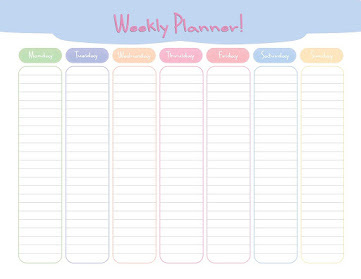 Photo by SHVETS production: https://www.pexels.com/photo/weary-ho...
Photo by SHVETS production: https://www.pexels.com/photo/weary-ho...There are no set hours in my schedule because I do household chores, exercise, handle what life throws at me, spend time with family, go to music practice, volunteer, and other tasks. It's not vital to work at specific times, but to make sure I get my writing done within this framework each week. The weekends are left open; if I get some free time I can do what I want like revise, start a new project, sub to editors, read new trends, etc. Also, to accompany the schedule I create lists. By seeing what I want to accomplish during the week and getting the satisfaction of not only crossing it off when it's done, but I get more things done. Schedules and lists are my greatest organizational tools for pushing past perceived limitations.
By using this framework I can be productive and reduce limitations (and stress!).
Charlotte writes MG, YA, NA, and adult novels in sci fi, fantasy, contemporary, and paranormal genres. She is the author of the award-winning middle grade Evolution Revolution trilogy, Simple Machines, Simple Plans, and Simple Lessons. She co-authored the YA novels Blonde OPS, Sirenz, and Sirenz Back in Fashion. She has two short stories in the Beware the Little White Rabbit (Alice through the Wormhole) and Scare Me to Sleep (Faces in the Wood) anthologies. Having finished her MFA, she's applying what she learned and is working on several children's and adult novels, along with some short stories. She lives in NJ with her family and floofy cat. When they trimmed the backyard tree, the crazy squirrel couple moved out (but a new family moved in!).
October 26, 2023
Interview with Lucille Abendanon, Author of The Songbird and the Rambutan Tree
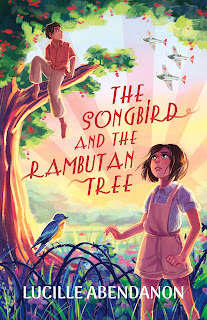
Thanks so much for visiting Smack Dab, Lucille.You have such an incredibly important story to tell. Please tell us a bit aboutThe Songbird and the Rambutan Tree:
Thank youfor having me! The Songbird and the Rambutan Tree is a middle grade historicalfiction novel about a girl called Emmy who lives in Batavia, in the Dutch EastIndies (modern day Indonesia) with her Papa. Emmy’s gift is her singing voice,but when tragedy strikes, she loses her ability to sing. With World War Twolooming, Emmy’s papa wants to send her away to safety, to the one place shedoesn’t want to go: singing school in England. So Emmy does everything she canto stay in Batavia, roping in her best friend Bakti and putting them both indanger. Her plan works and she sabotages her only chance to escape, ruining herfriendship with Bakti in the process. The Japanese army invades, and Emmy isseparated from her Papa and taken to a prisoner of war camp called Tjideng.Worst of all, the meanest girl in school, Violet, is put in the same house asEmmy. Emmy must face the pain of losing the ones she loves, find the will tostay alive in Tjideng, and somehow find her voice again.
Wheredid the idea for this story come from?
The book is inspired by my Dutch grandmother’s experience as a prisonerof war in Tjideng during WW2. Oma Emmy spoke openly about her years in Tjideng,and I was captivated by her stories. Our conversations spanned twenty-fiveyears.
Wasit difficult to write the story, one that was so close to your family?
Initially, yes. I always knew I would write Oma Emmy’s story one day,but I wasn’t sure what form it would take. It didn’t feel quite right to writeit as an adult novel. I think it felt disrespectful to my grandmother in someway. She was an adult when she was imprisoned in Tjideng, and to bring her tolife on the page, I would have had to colour in certain aspects of her life andemotions, and I just didn’t feel that would be respectful. She always used tosay, “You can listen to my words, but you’ll never truly know how it felt to bethere.” And she was right. I couldn’t presume to put myself in her shoes.Writing it as a middle grade novel took that one step back and put a little bitmore distance between my Oma Emmy and the protagonist Emmy. Emmy in the book is100% inspired by the real Emmy: her grit, her determination, her fightingspirit, her sense of humor, her artistic talent. But it’s not a true to lifeexact depiction of my Oma, if that makes sense.
Didyour Oma give many details about the actual prisoner of war camp? Did you findyourself inserting details to keep the story moving?
Oma Emmy gave me every single detail of the war camp, and it’s all inthe book. Well, the things appropriate for a middle grade audience, anyway. Hermemories of those years were crystal clear, like it happened yesterday. I thinkthere are elements of her story that seem so fantastical to us all these yearslater, like eating weevilly rice, sleeping in a cupboard, or bowing for hoursin the hot sun, that I really didn’t have to embellish or add anything to keepthe story moving. From a plot point of view, I made sure it was exciting, butthe facts of life in Tjideng are exactly as Oma described them to me.
Howdid you balance fact and fiction?
I was very fortunate that through my Oma’s stories, I had a detailedfactual framework through which I could weave the fictional story. I had a listof elements from Oma’s stories I wanted to include, for example, building thebomb shelter in the garden; the army truck that transported them to Tjideng;the daily bowing at tenko; House Two and sleeping in a cupboard; LadyMountbatten and the toilet paper; working in the central kitchen, all of theseelements, and so many more are all part of Oma’s lived experience in Tjideng.Bringing the characters to life within the historical context was thrilling,and they took on a life of their own. Kitty, for example, arrived one dayunannounced and wrote herself into the story! Yet, she is rooted in factbecause there were many British women in prison camps all across the region.
I also wanted to portray the Indonesian struggle for independence thatwas going on at the same time, and the impact it had on Emmy and Bakti’sfriendship. That was definitely an area where I wanted to stay true to history,whilst also trying to imagine how two children on opposite sides would beaffected.
I was very conscious of always remaining true to the history on bothsides, especially since the events in the book are still within living memoryfor some. I did a lot of research, spent time in Indonesia and visited Tjideng,and only when I felt sure I grasped the historical context, could I drop myfictional characters in and let them get on with it.
Whatstruck me from the very beginning were all the sensory details. You immediatelyknow you’re someplace quite different than the US. Did your travels help informthe worldbuilding?
That’s really lovely, thank you. It was really important to me to bringthe setting to life. I grew up partly in the English countryside, and partly inSouth Africa and I’ve always felt very close to nature. Whenever I move to anew country, nature is always a grounding force for me, and so it felt naturalfor Emmy to be the same. I lived in Southeast Asia for five years, and itdefinitely informed the worldbuilding for this novel. For example, the Asian Koelbird, which wakes Emmy up just before dawn, comes from when I lived in Bangkok.There was a huge tree outside my bedroom window, and in the spring the Koelwould wake me up every morning with its loud call. It was magical. Childrenexperience the world with all of their senses, much more than adults, so Iwanted the wonderful sensory details of Indonesia to be integral to the story.
Whatwas it like to visit the actual house where your Oma lived?
Very emotional, especially when I phoned her from outside House Two. Ifelt incredibly grateful that she (and my Opa) survived the war, because ifthey hadn’t, I wouldn’t have been born. I felt immensely in awe of her formaking it through those years, and going on to live the wonderful life she did.It also felt like I was touching the past, like 1942 was right there, justbeyond my fingertips. Just for a moment, time evaporated.
I have to admit, this stirred all sorts offeelings as I read–I had a great, great grandfather who was a prisoner inAndersonville, and have tried to track down a radio interview he supposedlygave to no avail. I can only imagine the emotions your Oma’s story must havestirred in you as you listened. (It can be hard to listen to, but it’s soimportant to get these stories down! Otherwise, they’re lost forever.) Whatadvice would you give anyone getting started in documenting family history?
Oh wow, itwould be amazing to find that radio interview!
I think newgenerations often discount older generations as being uncool, or evenworse…irrelevant. Whenever I go on about living without smart phones, or how weonly had an hour of kids TV in the afternoons, my kids roll their eyes! But Iam always telling them there is value in the past, and magic in listening tothe people who lived it share their memories of a world long gone.
My adviceto anyone interested in documenting family history is:
1. If you have a family member you can talk to, ask lots of questions. Not just ‘what happened’ questions, but ‘how did you feel’questions too. The magic of history is often in the small details or feelingsthat aren’t immediately obvious on the surface, so dig a little, ask open-endedquestions.
2. Treat thepast like a foreign country and your family member as your tour guide. Ask themabout what they ate, what clothes they wore, what they did after school, whatwas on the news at the time, what music they listened to. Notice thedifferences between their world back then, and our world now, but notice thesimilarities too.
3. Become adetective. Human memory isn’t perfect, and sometimes, you might have to fill insome of the blanks. If you’re researching someone in your family who lived along time ago, be creative with your Google searches and try to think ofdifferent ways to phrase things. Don’t stop at Page 1 of Google, go down therabbit hole and see what results there are on page 24! I have found a lot ofinformation by researching my family tree, rather than a single person. Jotdown leads as you discover them, no matter how trivial, and start joining thedots. There are also organisations like Ancestry.com, where you can subscribeto gain access to census registers or search WW2 service records. Look at birthand death registers. You can even find ship manifests online, if you know yourancestor travelled somewhere by ship, for example. Often, if you dig deep andwidely enough, you’ll discover something you weren’t expecting that giveswonderful context to the person you’re researching. I was researching a soldierwho died in 1890, and came across his will in an database of British soldierswho died abroad. In it, he left his collection of books to his sister. Thattiny fact says so much about him and their relationship!

What’snext?
I’m currently workingon book two. Set at the very end of the First World War, it’s a story of a girlcalled Percy who comes back to England from South Africa, to be reunited withher father who has been wounded fighting in France. But she soon learns he ismore gravely ill than she was told. She begins to suspect the doctor lookingafter him is doing more harm than good, and when her father starts calling outa strange name in his feverish sleep, Percy sets off on a race-against-timejourney to uncover a family secret. There is also a talking African pied crowand a magnificent dappled grey horse called Valerian.
Wherecan we find you?
I am @Author_Luc ontwitter/X; @lucilleabendanon_author on Instagram. And my website is www.lucilleabendanon.com where you’ll find lots of behind thescenes information about the book and the real Emmy.
October 25, 2023
It's My Story & I'm Stickin' With It - Holly Schindler
In the interest of pushing beyond limits, I recently took the plunge on something I've been thinking about for some times now. I launched a Substack newsletter:
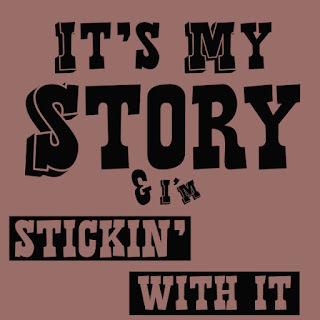
The whole idea was born from my mystification that here, thirteen years after my first book released, the actual process of producing a book is no easier than it ever was. Traditional writing advice is basically just to white knuckle it. Persist! Keep going! You’ll get through it!
None of us got into writing because it was torture, though. It was a joy. It fueled something inside us. Storytelling fit. To be sure, anytime you take a love or hobby and spin it into a career, the grind starts wearing away at you. That’s just the nature of the beast.
I love writing no matter what. I love it every bit as much as I did when I was that little girl with her crayons and her ribbon. But I do wonder, at this point in my career:
Really. What if the elusive, messy process of getting that first draft down could be streamlined? What if writers could equip themselves with a step-by-step guide for revision, so that they wouldn’t have to dread the editorial letter? What if marketing didn’t have to be torture?
None of those above questions will be answered in the same way by every writer. That’s why everyone will tell you there are no hard and fast rules in writing. But too often, that leads writers to think they can find no rules for themselves. And maybe that only leads to grappling around in the dark every single time the writer sits down to write the next novel.
If a writer could stop fighting the process, wouldn’t that open up the writer to more creative play?Come along on the journey with me--this new adventure, this jumping off point:~Holly Schindler is the award-winning author of The Junction of Sunshine and Lucky.
October 23, 2023
The Dogged Determination of Imagination: Smack Dab in the Imagination by Dia Calhoun
Completing a novel, or any long, complex work, requires a doggeddetermination. You write draft after draft over months and years. Sometimes you feel like it will never be done. Often thereis a final push to the finish. Polish! Polish that red apple! For months youfocus, work, ignore all the shiny distractions—what about this poem? That new idea?That essay, book, trip, social event? Many days, you doubt the book will everbe done. Toward the end of the polish process, this can feel like the eighthmonth of pregnancy—
That’s where I am in my current book—and I haven't even started labor pains yet.
For me, imagination is a co-partner with determination. Idon’t mean imagining my completed, printed book or manuscript in my hand or ona bookshelf (although I know this helps some people). What helps me to keepworking is imagining my book becoming its own luminous self, existing in theworld independently of me—like a cluster of candles, that in the aggregate,will cast its own unique light. Something born. When my imagination can picturethat, hold that thought, my determination is renewed.
OK, back to work.
October 16, 2023
Never Enough Time
I often joke that if every day was 36 hours long then maybe I could get all the things done. This is true personally, of course, but here I'm writing mostly about what it means to me in my workplace. In my elementary school library, I am the only employee. I'm responsible for doing everything from ordering and processing books to planning and teaching classes to wiping down the tables after a lunch group. I check all the books in and out, do all the shelving, the weeding, repairs, displays, organizing and reorganizing. And also there are my non-library tasks - those things that just come with working in a school community. I have curb duty every morning when students are arriving, recess duty once a week, and just this year I've begun to supervise a reading intervention class for half an hour every day. For several years now, I've also volunteered to care for all the tropical plants in the solarium by the front doors of the school.
Which is all a very long-winded way of saying, what limits me the most is time. Time, that precious
 commodity. No matter how I wish for it, I can't get more than 24 hours in my day. And since one must also sleep, eat, walk the dogs, care for the chickens, not to mention the family, and maybe, just maybe, get a few minutes to oneself, there's not much time to spare.
commodity. No matter how I wish for it, I can't get more than 24 hours in my day. And since one must also sleep, eat, walk the dogs, care for the chickens, not to mention the family, and maybe, just maybe, get a few minutes to oneself, there's not much time to spare. I pack a lot into my eight hours at work. Whether it's one of my days where I teach five classes and have time for little else, or one of my days with only two classes and a ton of back-room work, I am going from 8:15 to 4:15 and usually a little beyond. Our school district asks us not to, but most of us continue to work for a little longer after we've clocked out, and of course, there's the work we do at home. Before I started writing this blog, I checked my email and sent out some responses.
Because of these limits on my time, there are long lists of projects I'd like to get to, but realistically probably never will. Cleaning out and organizing my store room? Forget about it. I'd need a full week. Reorganizing the book series' on my spinning rack? I might get to it by Christmas. Purging my map and poster drawers of all the outdated items? Well, I got one drawer done. Only five more to go. Absorbing my short story collection and oversized books into general fiction and picture books? Maybe next year.
And in a way, I guess what limits me is also money. Our school district, like many, struggles with funding every single year. I've heard amazing stories of the budgets the librarians used to have back in the 80s, when the state was flush with oil money. Even a few years ago, there used to be money to pay for an assistant to help with shelving and book repair for 15 hours a week. Not anymore. What I have is my friend Jill, when she can spare me a few minutes. I'd be happy to work a couple of extra weeks into my summer in order to get some of the backlogged tasks done, but there's no money to pay for it, so they won't let me.
Unfortunately, this isn't a problem that really has a solution. I know what happens when you mess with the time-space continuum, so I'm stuck with this timeline. And unless our governor and legislature suddenly reverse course, we will be stuck with sub-par funding for the time being. What's a dedicated librarian to do? All I can do is prioritize, work hard, and focus on the kids. My library and my collection may not be all I'd like them to be, but as long as I'm reaching kids - teaching them something they didn't know and helping them become lifelong learners - then I'm doing my job. My library itself will always be a work in progress, but I have a love and knowledge of books and reading that I hope is contagious. If even one kid looks back on their time at school and says, "Remember Ms. Zayon? She was a really great librarian!" then I'll consider it a job well done.
October 15, 2023
Remembering the Glimmers
Even under normal circumstances, there are days when it canbe hard to create. These days, I find my comfort in my reading, and my writing and my garden.Albeit, it’s still a struggle to navigate the trenches. And I get tired easier. Still, I see glimmers. You remember what defines a glimmer: a tiny micro-moment of happiness, a sign of hope.
But now, during what some scholars have called the mostdangerous time on our planet, it seems to be hard to find even the smallest glimmer.
I’ve shared these words by the indomitable Emma Dryden, whoreminds me in the most Dumbledorish of voice, that words are an inexhaustiblesource of magic. And hope. Now more than ever, these words bring a most neededglimmering.
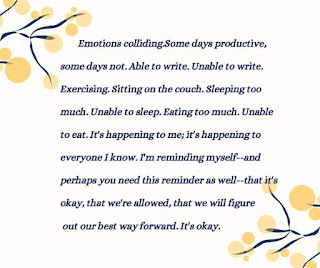
Remember the glimmers.
--Bobbi Miller
October 12, 2023
Book Review: DUST by Dusti Bowling
We writers of middle grade books know how special this genre is. There is so much good writing and noteworthy books are always being published. My pile of "to read" books never ends. I look forward to each new book and what I might discover in its pages.
Even with so many great books, there are some that rise above and insert themselves under my skin, inside my soul, and refuse to leave.
DUST by Dusti Bowling is one such book.

Here is the blurb from Amazon:
After Avalyn nearly died from an asthma attack, her parents moved her to the clear, dry air of Clear Canyon City, Arizona. And for the last ten years, she’s been able to breathe. That is, until Adam showed up.
Quiet and unkempt, Adam is an instant target for the bullies who have plagued Avalyn and her friends. As Avalyn gets to know him, she begins to suspect that the sudden, strange increase in dust storms around town are somehow connected to his emotions. She thinks his problems may be even worse at home, especially when massive black walls of dust start rolling in after the school day. Will she find a way to stand up for her new friend? Her life may just depend on it.
Dusti Bowling delivers a page-turning, powerful, and poignant novel of friendship, courage, and healing, perfect for readers of Kimberly Brubaker Bradley, Lynda Mullaly Hunt, and Erin Entrada Kelly. Here is my review:
A powerful,affirming, and important story of friendship, courage, and healing, sensitivelyand honestly told in Bowling’s signature style. My favorite quote: “Breath ispowerful. What I choose to do with my breath can change the world.” Indeed.
When Avalyn,the heroine of the tale – who struggles to breathe due to severe asthma and allergies– finds the courage to speak out about the bullying and abuse taking place ather school, things do begin to change. The message is a simple but powerfulone: Speak up. Do not be silent. Tell someone you trust and don’t stop tellinguntil someone believes you. Use your words, your breath, to make a difference.
This is animportant message and an important book that should be required reading inevery classroom in America. Highly recommended.
October 11, 2023
Limitless!

Ask any author: What’s your most frequently asked question?
I guarantee, if not at the very top, at least in the top five you’ll hear: Where do you get your ideas? Or inspiration? Or whichever quasi-synonym.
For me, this is the hardest question to address. Honestly? I have no clue where or how I get my ideas. I do know that I don’t really want to know the answer.
I’ve found that the times I try to force ideas, when I think too hard, thoughts tend to be stale or contrived or, otherwise, too uninteresting to seriously consider. But those times when I follow my mind to wherever it wants to take me, allow it the time and space to roll sudden randomness through the magical processes sparking the brain, the ideas are limitless.
All that is wonderful in theory, but how can I make my answer interesting to the kids (or adults) who ask the question?
Okay. Let’s try this.
Imagine being in an expansive orchard, each tree abounding with its own unique variety of apples and artichokes, marbles and markers, whisks and wires, ores and oars...
an endless array of objects and emotions, colors and textures, shapes and sizes.
Are you there? I am.
 Peaches, yes, but what's beyond?
Peaches, yes, but what's beyond?As I walk through, I’m drawn to a particular tree. I stop and explore its unlikely array of offerings. Hmm. If I pluck the golden pair, snatch the cerulean pair of sunglasses. and pair them with the peregrine falcon, what ideas might grow?
Okay. There’s the sense of taste, sight, and flight. Or nourishment, protection, and companionship. Or... maybe this is as far as that idea takes me. No problem. I can always return to this tree or meander to a more interesting one across the orchard until I land upon a unique combination—a thought, an idea, a mind picture—that makes my senses tingle, my imagination come alive, my brain burst with possibilities.
In fact, sitting here, not trying to think too hard, I just came up with this exercise. I’ve used others to help me before. Which others? I’ll keep you wondering for now. Give you the time and space you might need to find one that works for you...
Because such creative tools, like objects and ideas and the universe, are limitless.
Readers particularly ask Jody Feldman about her inspiration for the warehouse scenes in The Gollywhopper Games. She really doesn't have a good answer :)
Peaches photo credit: https://www.123rf.com/profile_pixander



